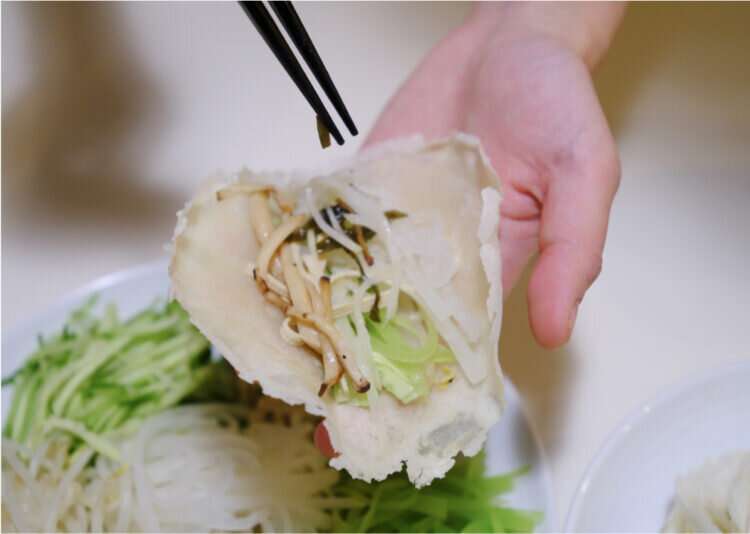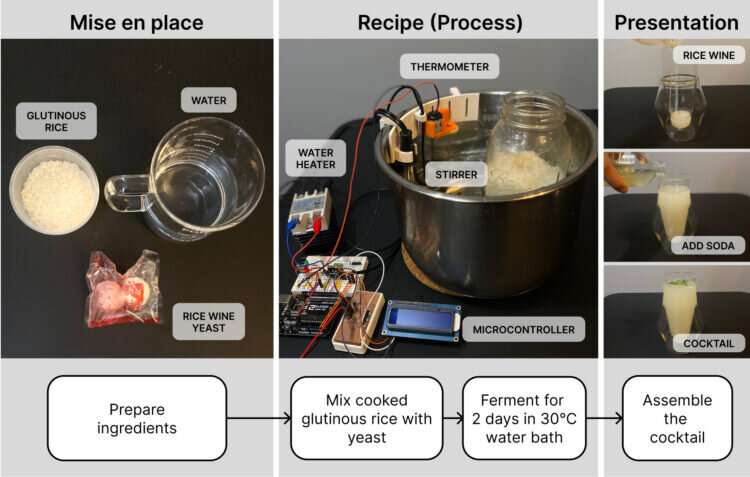This article has been reviewed according to Science X's editorial process and policies. Editors have highlighted the following attributes while ensuring the content's credibility:
fact-checked
trusted source
proofread
Have a favorite food memory? Researcher discusses how technology can help take you back

Many people remember a specific food they enjoyed as children, whether it's a special pie made by a grandparent, a once-a-year tasty treat for a holiday or spring rolls from a street vendor. But while the memory of the experience is readily available, the recipe to make that food is not. Even with access to recipes online or passed down through generations, it's hard to balance the complicated process of cooking with the sensory details from a memory.
What if we could use technology to take some of the pain out of re-creating recipes? Maybe a thermometer to keep tabs on the temperature or a stirrer to continuously mix ingredients? That way, a cook could focus all of their attention on the details in their memories: the taste, the texture or the smell.
Danli Luo, a University of Washington doctoral student of human centered design and engineering, developed a toolkit of sensors and controllers that helped her re-create three dishes from growing up in China: rice wine, tofu and spring roll wrappers.
Luo presented this project April 25 at the ACM CHI Conference on Human Factors in Computing Systems. Daniela Rosner, UW associate professor of human centered design and engineering, and Nadya Peek, UW assistant professor of human centered design and engineering, are also co-authors on this paper.
UW News sat down with Luo to talk about this research.
What inspired you to do this project?
Danli Luo: It all started when my advisers and I were brainstorming scents and spices. There's a very special spice, called litsea oil, that I don't think is common in Western culinary tradition or even in Asian culinary tradition. It's very specific to a region that my parents are from, thousands of miles away from here. So the inspiration for this project was to develop a toolkit that could help us re-create culturally meaningful dishes—all three of the dishes I made for this paper used different spices from my childhood. I had to dig around the internet quite a lot to find the litsea oil. And it's still a bit different than what's in my memory.
Why do the foods have to be personally significant to use this method?
DL: If you haven't tried a dish ever, how can you re-create a personal experience from it? This toolkit works more with something that you have eaten but never made before—such an ancestor's recipe—and you just can't figure out the process.
The toolkit helps us simplify that process. And then we use our memory to gauge the final product. During the process of re-creating these dishes, we can extract the joy and the connection to our family and loved ones.
How does your toolkit compare to other "precision cooking" techniques, such as an Instant Pot or a bread maker?
DL: Instant Pot is a great tool, but it automates everything. If something goes wrong, you won't understand what happened. You just have to do it again, and you still don't know why or how things went wrong because you are not part of the experience. And most of the time I don't think people have agency over the recipe that they're going to try.
We want to celebrate the cooking effort, that connection, that ritual of eating together with family and friends. So it's not like we want a toolkit that just takes care of the cooking for us. We would love to see people enjoying cooking with a little help from the tool to make the cooking process less complicated.

So how does the toolkit work?
DL: The toolkit comes in after a period of trial and error. We find that there are certain things that we can quantify or digitize.
When people from my hometown are making the kinds of food we made for this paper, they don't use a thermometer or a precision oven. They still use older techniques that have been perfected over centuries. But if you were to move this whole setup to another place, everything changes—for example, the humidity is different, crops have different protein content and water has different alkalinity.
There are so many reasons why a recipe might not work, and having a toolkit helps people with that. It can alleviate some of the pain by automating things such as temperature control so that you can focus on the flavor, on the chemical reaction, on the changes between molecules.
We wanted to elevate people's sensitivity during the process of cooking with some degree of help from simple automation.
In your paper, you said the first time you tried to make the rice wine, it turned out to be vinegar. Tell us about the process.
DL: For the rice wine, I found this database online where people have written scientific papers about wine fermentation. So I followed their conditions, but it just didn't turn out. Then I had to debug. The problem wasn't with the thermometer I was using. I had to figure out other environmental factors that we didn't predict.
In this case, I didn't take into account that the chemical reaction of the rice and yeast mixture could change the temperature. The change was so slight that the thermometer didn't detect it and adjust accordingly. I changed the temperature of the water bath that the reaction was sitting in to finally successfully make rice wine instead of vinegar.
How did it feel to make and then eat these foods from your childhood?
DL: I think cooking is a process that should be enjoyed and celebrated. For example, when I made the tofu, watching it curdle up was part of the fun. You can see how the chemical reaction happens instantaneously. That's really enjoyable for me. And that's an experience we wanted to pass along. You can buy packaged tofu from the supermarket and it tastes OK. But the fun of making it is an irreplaceable experience.
When I tasted the flour skin spring roll, it brought me back to when I was a kid in my father's hometown. This is street food. It's in a market and we would walk around and eat it together. It's a great memory.




















